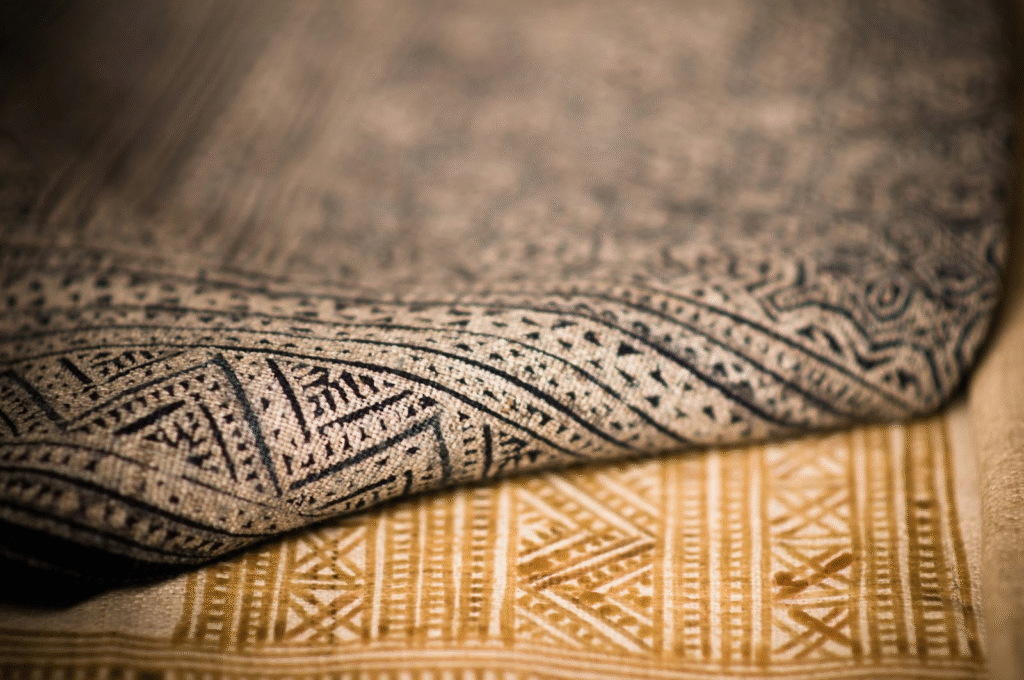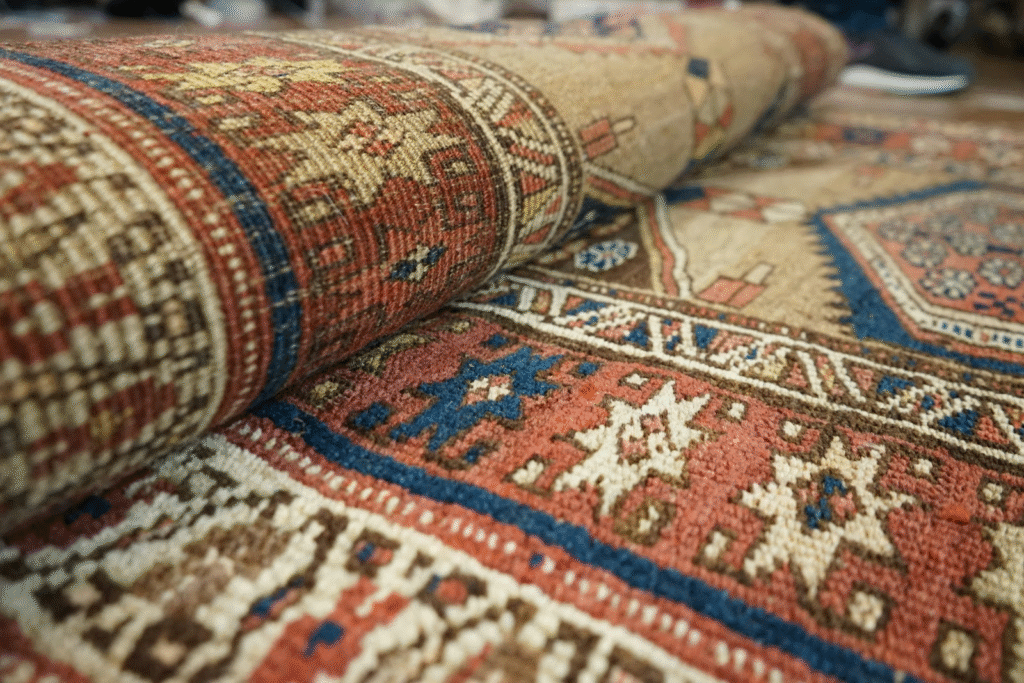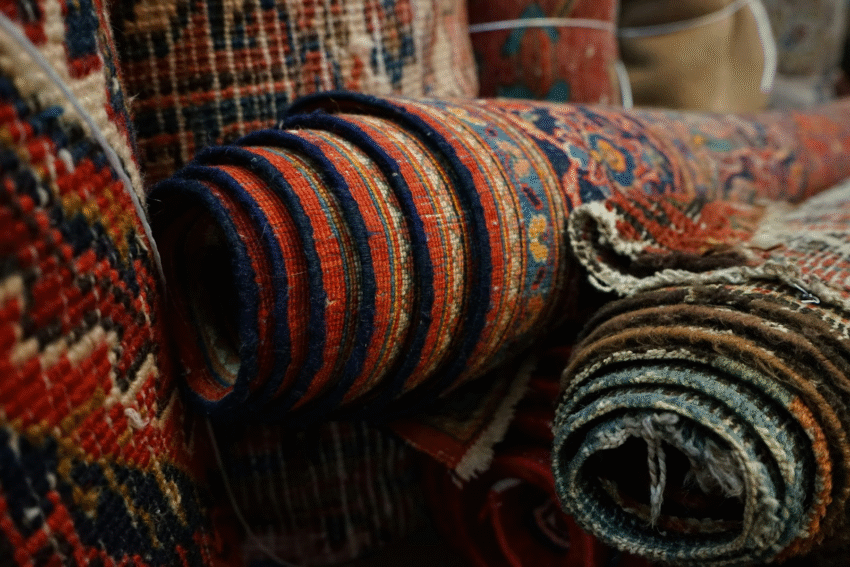Rugs are far more than decorative decor. Each is a masterpiece of craftsmanship, reflecting the traditions, culture, and skill of the artisan who fabricated it. They’re works of art, contributing to the vibrant social fabric of not only their origin country but our global community.
Unsurprisingly, countries around the world have taken notice of their enduring beauty and heritage. That’s in large part thanks to the partnership between artisans and professional rug buyers, providing consumers with highly sought-after luxury textiles from all around the globe. This ensures the preservation of the rugs’ rich history, artistry, and time-honored craftsmanship.
Learn more about the growing demand for these luxury pieces and how artisans are seizing these opportunities.
The Art of Handmade Rugs

Photo by Walter Alejandro on Pexels
Handmade rugs are pieces meticulously crafted by artisans, often using traditional weaving techniques such as hand-knotting and flat-weaving. From modern floor coverings to antique rugs, these artworks cater to the residential and commercial sectors for a myriad of factors, including:
- Intricate craftsmanship
- Unique designs
- One-of-a-kind patterns
- Cultural significance
- Superior quality
A Market Poised for Growth
The handmade rug business is thriving. Estimated at $11.5 billion USD in 2023, the market is expected to reach $16.9 billion USD in 2032. That’s a compound annual growth rate (CAGR) of 4.3%. What’s energizing this growth?
- Desire for Handcrafted Pieces – Consumers are increasingly valuing the artistry and cultural heritage of handmade rugs. Unlike mass-produced rugs, these pieces deliver more unique designs and qualities. This adds to their value and appeal.
- Growth in Luxury Real Estate and Hospitality Sectors – More luxury hotels, resorts, and commercial spaces seek handmade textiles to enhance the elegance of their interiors.
- Rising Popularity of Customization – Today’s consumers are driven by a desire for customized spaces that mass-produced floor coverings simply cannot replicate. Bespoke weavings allow them to customize patterns, designs, and sizes to fit their unique spaces.
Tapping Into the Global Market

Photo by Trang Nguyen on Unsplash
Partnerships Between Artisans and Rug Buyers
Specialty rug dealers play a crucial role in expanding the global reach. Many have long-standing relationships with artisans, legacy weaving families, and international suppliers, which enable them to offer curated selections of handmade rugs to clients, showcasing their unique craftsmanship and providing a tactile experience.
They essentially serve as a vital distribution channel between rug makers and consumers, allowing artisans to reach untapped global markets.
Leveraging Digital Platforms and Technology
Technology has removed barriers to market entry for rug artisans. This includes:
- Online Marketplaces – These platforms allow artisans to set up virtual storefronts to sell their work.
- Rug Dealer Sites/Virtual Showrooms – Beyond their in-person showrooms, these suppliers often display their collections online. E-commerce enables small weaving communities to connect with niche audiences and collectors. They can browse and purchase rugs from an array of global artisans.
- Social Media – Social media marketing provides an ideal way for artisans and rug dealers to showcase handcrafted rugs and reach new audiences around the world.
Making Custom Pieces
Artisans are also tapping into the global market through the creation of custom pieces.
Consumers are seeking unique, one-of-a-kind textiles that reflect their personal style and decor. They’re also increasingly drawn to pieces that reflect cultural heritage and craftsmanship, moving away from mass-produced and machine-made rugs. Artisans are responding to this demand by offering custom textile services, often made possible through partnerships with international rug dealers.
International Appreciation for Craftsmanship and Unique Designs
Asia-Pacific is the leading contributor to the global handmade rug industry thanks to its mastery of traditional craftsmanship, particularly in countries such as Pakistan, India, Nepal, and Iran. This legacy of crafting intricate textiles has not only attracted local consumers but also international buyers.
One such region characterized by this interest is North America. According to Cognitive Market Research, North America is the fastest-growing market. They attribute this growth to the region’s interest in authentic and handmade crafts, as well as its diverse demographics, evolving interior design trends, and support for artisans.
Europe is another significant market for handcrafted rugs. Similar to North America, this is driven by a combination of interior design trends and cultural appreciation. The online distribution channel has also fueled the demand for artisan-made pieces.
The Connection of Global Cultures Through

Photo by Robert Sciberras on Unsplash
Handcrafted Rugs
While the market for handcrafted rugs has traditionally existed offline, online channels have presented the unique opportunity for artisans to connect with a wider global audience. This has been especially advantageous for smaller artisans who may not have had previous access to international markets. It also appeals to younger generations that are more inclined to make high-value investments online.
Partnerships with rug buyers also help artisans bridge the gap between international markets, expanding their reach through virtual and in-person showrooms. These partnerships are crucial not only for elevated interior design but for connecting global cultures through the beauty of craftsmanship and bespoke artistry.

